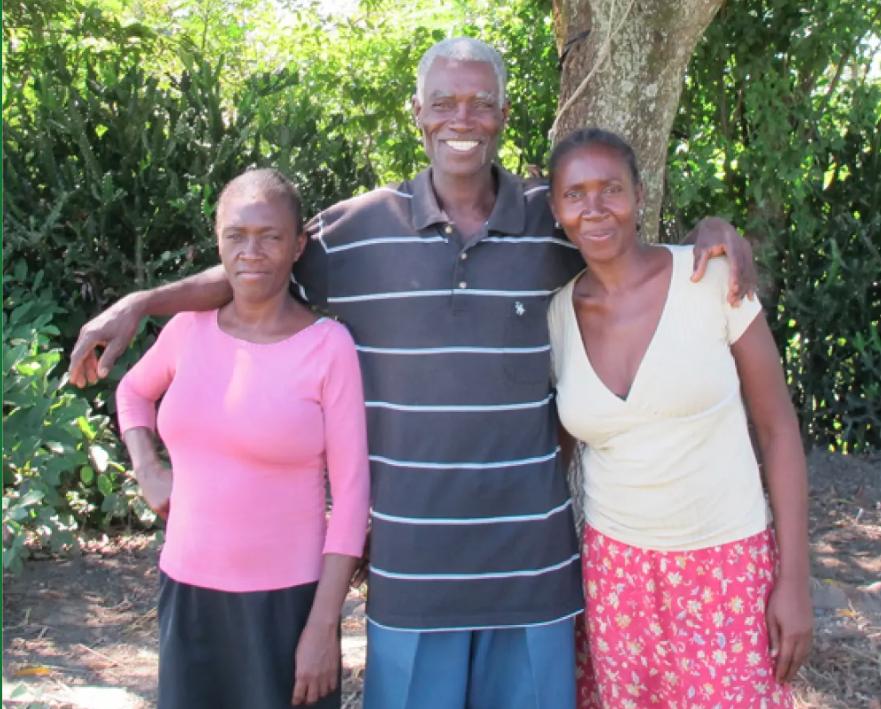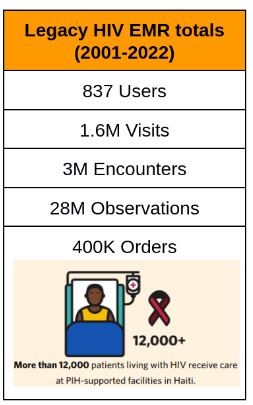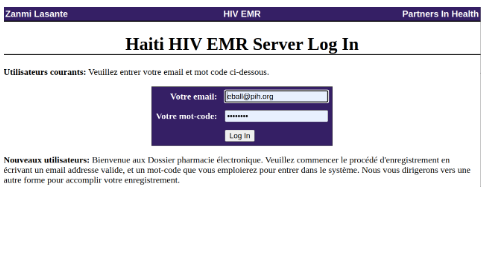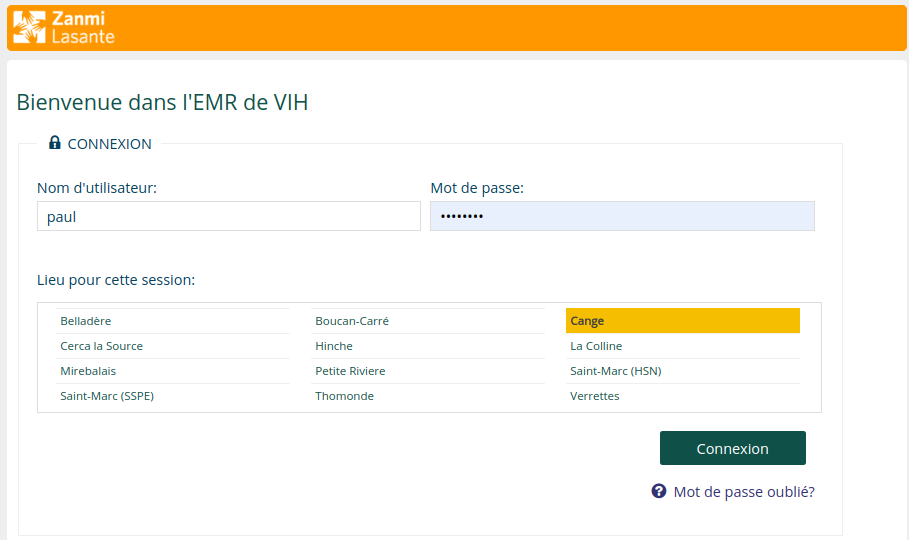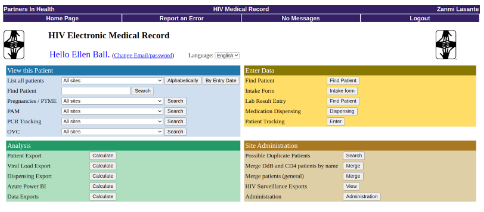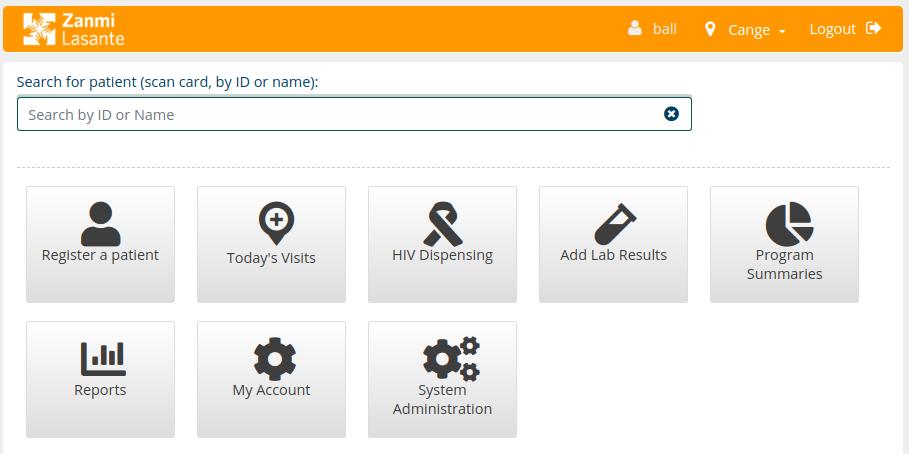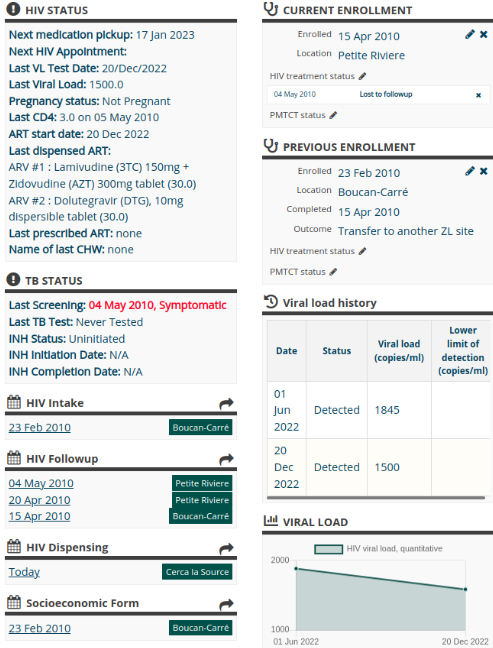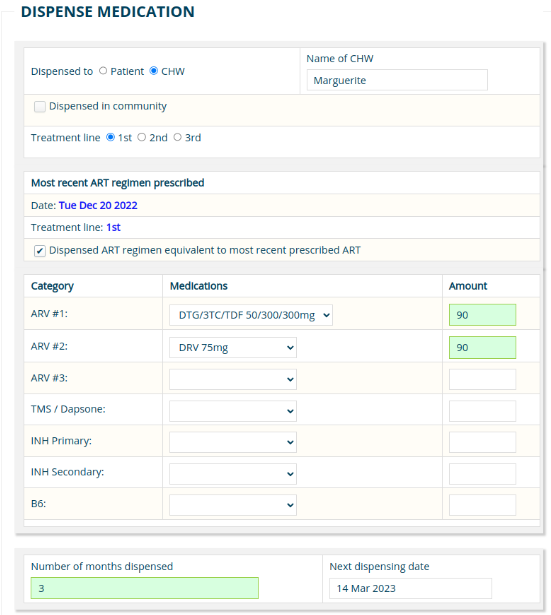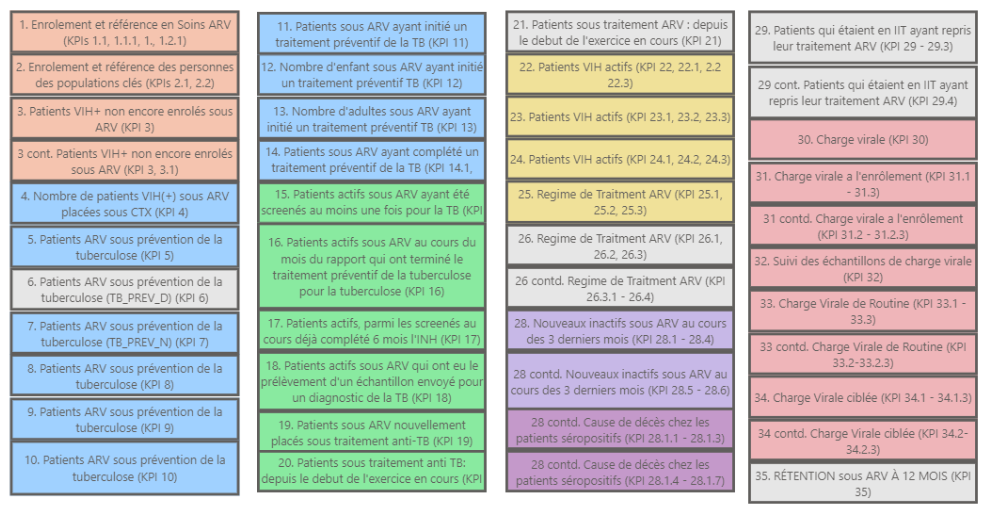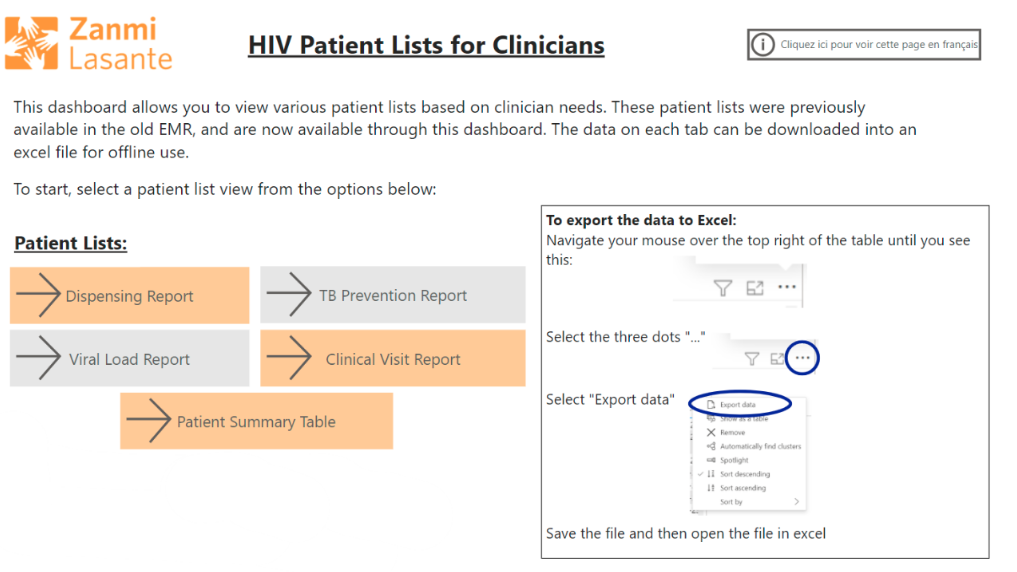Partners In Health HIV EMR Case Study
The Partners In Health (PIH) organization in Haiti, known locally as Zanmi Lasante (ZL), operates health centers and hospitals at 12 sites across the Central Plateau and the lower Artibonite, two of the country's poorest regions. Zanmi Lasante connects vulnerable people in Haiti to comprehensive primary care services and HIV prevention while working in support of the Ministry of Health’s goal of universal treatment coverage. Across all of our sites, PIH/ZL invests in systems that support high-quality, longitudinal care for our patients.
History of ZL EMR
In 2001, all PIH/ZL supported hospitals and clinics started using an HIV electronic medical records (EMR) system. The HIV EMR (version 1) was an invaluable system for our many HIV+ patients, clinicians, and funders. Data entry clerks transcribed lengthy paper forms into the EMR with retrospective data which improved data quality and streamlined reporting. This custom-built and web-based EMR was used for 21 years for all HIV+ patient care at ZL.
OpenMRS was introduced in 2009 to support non-HIV EMR systems at ZL health facilities. The stable, point-of-care PIH EMR utilized at University Hospital at Mirebalais was expanded to support other health facilities (see map) and clinical areas (Primary Care, Mental Health, NCD, Maternal Health, Surgery, Oncology, Emergency Triage, etc).
HIV EMR System
The HIV EMR system assists clinicians and patients at all points of the care continuum, from recording diagnosis to mapping treatment plans and retaining patients in our care. The goals are to identify and register all HIV+ patients, enable clinicians to enter patient data at the point-of-care, and eventually leverage these systems to provide comprehensive and complete data on all patients.
These are all features of the HIV EMR:
- Identify and register all ZL HIV+ patients and exposed infants at all ZL health facilities.
- Point-of-care system leading to reduced data backlogs, higher quality data and improved access to data for patient care.
- Retrospective data entry for all data
- Data entry for HIV intake and follow up, HIV Medication dispensing, HIV counseling & test, PMTCT (pregnant mother-to-child transmission of HIV) intake and follow up, Exposed infant, Vital signs, Lab results, and Socioeconomics
PIH EMR (OpenMRS) software is used at all ZL sites, but with various features available, based on the capabilities and workflow at the health facility. The facility-based EMRs at Mirebalais, Lacolline, Thomonde, etc cover clinical areas other than HIV (primary care, women’s health, non-communicable diseases, emergency triage, oncology, surgery, etc). The HIV EMR has functionality only for treatment and care for HIV.
Still healthy (2014), Adeline Merçon (left), St. Coeur François (middle), and Monèse Gracia (right) were some of the first AIDS patients to begin antiretroviral therapy in 1999 and 2000 through the Partners In Health-supported HIV Equity Initiative. Daniel Eisenson/Partners In Health
Migration from HIV EMR V1 to V2
Priorities for the HIV EMR Version 2:
- state-of-the-art HIV EMR on OpenMRS
- re-use PIH EMR software and functionality
- retain v1 functionality with improvements for latest requirements
- stop maintaining legacy software (v1)
- coalesce PIH EMR systems on OpenMRS
With 21 years of HIV data at ZL, another major priority was preserving all the data and migrating all to the new HIV EMR (version 2). This included over 28 million observations for 50,000 unique patients.
| Version 1 | Version 2 |
|---|---|
| Clinician-facing dashboard provides a summary of most recent information (ie. HIV and TB status, HIV intake+follow-up, HIV dispensing, viral load, and more). | |
| HIV Dispensing records the medication dispensed to the patient or CHW. It could provide enough medicine for multiple months. Dispensing could be in the health facility or the community. |
Reporting
With the new HIV EMR we also introduced data warehousing and automation of PEPFAR reporting. This option, when implementation is complete, will eliminate manual data management steps, improving data quality and reducing the time burden for completing this extensive reporting. A dashboard calculating the required indicators is provided in PowerBI, and is automatically updated via a daily ETL.
In addition, the data warehouse has streamlined critical patient monitoring. A dashboard provides multiple auto-updated patient lists for tracking patients late to pharmacy pick ups, with missed appointments, and other timely follow up important to keeping HIV patients in treatment.
Technical specifications
HIV EMR (Version 2)
The HIV EMR (V2) is built with the OpenMRS Reference Application (RefApp) and Platform 2.x along with customized workflow, html form entry, and reports. It is available in Haitian Kreyol, French, and English.
Github: https://github.com/PIH with PIH EMR installation instructions: https://github.com/PIH/openmrs-distro-pihemr
The concept dictionary has a curated list of diagnoses, procedures,and drugs. Most of these concepts are shared with the CIEL dictionary. Standard coding terminology is used:
Laboratory tests and radiology orders → LOINC
Procedure → SNOMED
Diagnoses → ICD10, SNOMED
Medications → RxNORM
The HIV EMR is a cloud-based server and requires internet connection for each health facility in Haiti.
Modules:
HIV EMR (Version 1)
The first EMR for PIH was built for MDR-TB (Peru) with funding from the Gates Foundation (2000). The MDR-TB EMR used free and open-source ACS (ArsDigita Community System) toolkit along with java software and oracle database. The code was further configured for the ZL HIV EMR. Although ACS and EMR code was free and open, the EMR was entirely designed, developed, and supported by PIH.
When PIH was expanding to other countries (Rwanda in 2004), it was apparent that a larger community was necessary to build and maintain the next version of EMR. PIH wanted this next generation system to be a global collaboration. OpenMRS started with Regenstrief Institute (AMPATH in Kenya) and PIH. The need grew from the critical need to scale systems for the treatment of HIV in Africa. Since 2005, PIH has built EMR systems using OpenMRS.
Future
PIH would like to have consistent EMR systems at all our ZL and other PIH health facilities. It is imperative to integrate HIV EMR patient data with other clinical EMRs with reliable power and network and interoperability.
References
- PIH EMR (Haiti) Case Study
- University Hospital in Mirebalais (Haiti) EMR Case Study
- Open-source EMR: A New Model for Evidence-based Health Care in Haiti
- Bill & Melinda Gates Foundation Awards $44.7 Million To Harvard Medical School To Control Multidrug-Resistant Tuberculosis Worldwide
- Using the ArsDigita Community System
Contributors
Gratitude to past and present colleagues at Zanmi Lasante and PIH who have contributed to the success of Version 1 and 2 (leadership, clinicians, Monitoring/Evaluation/Quality (MEQi), IT, and HIS). OpenMRS community members include Mike Seaton Darius Jazayeri Hamish Fraser Ellen Ball Mark Goodrich Dupuy Rony Charles Cosmin Ioan David DeSimone James Mbabazi Louidor Jean-Paul Andrew Kanter
Financial support by PEPFAR and CDC, and the audacious vision of Paul Farmer.

